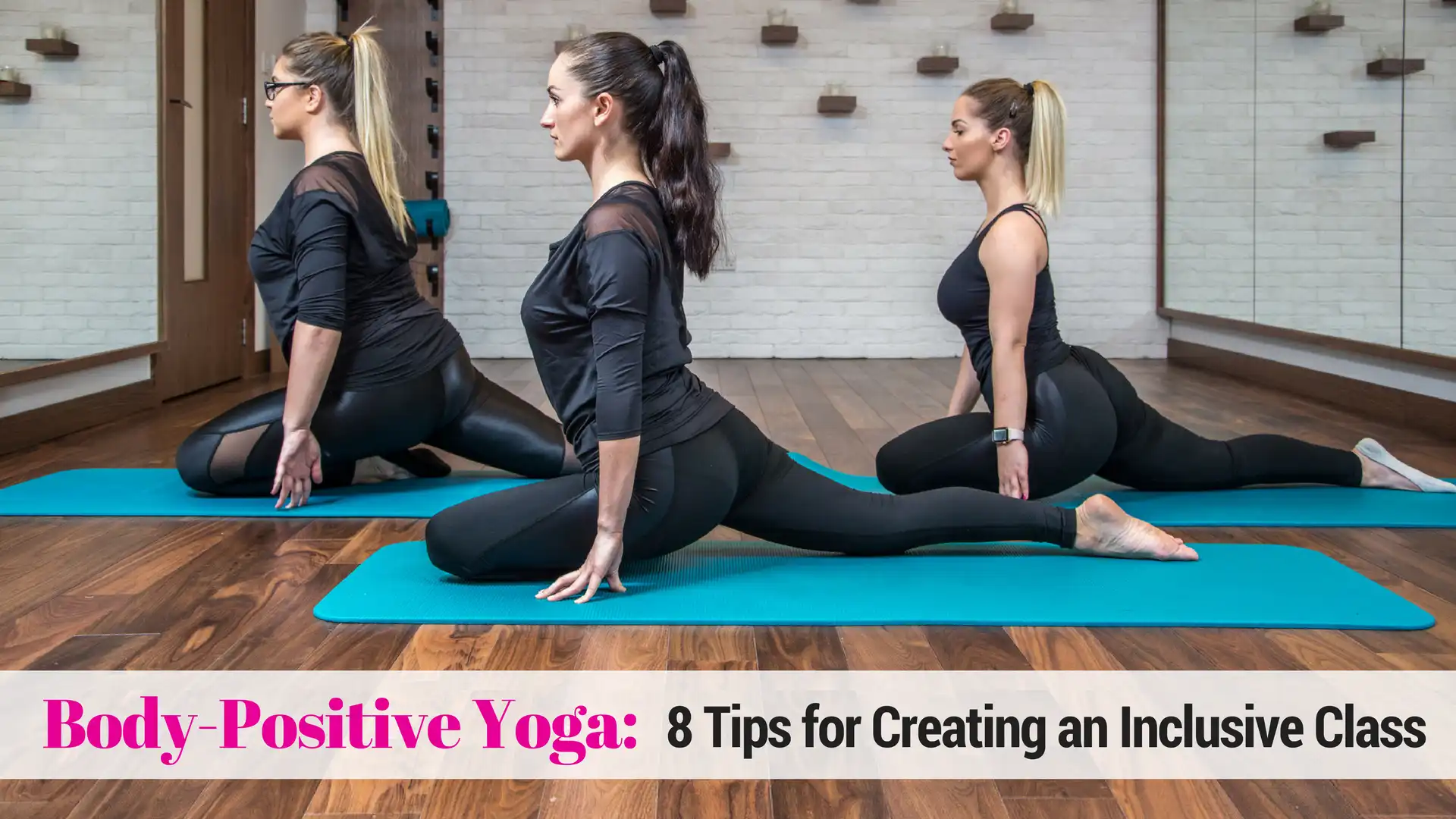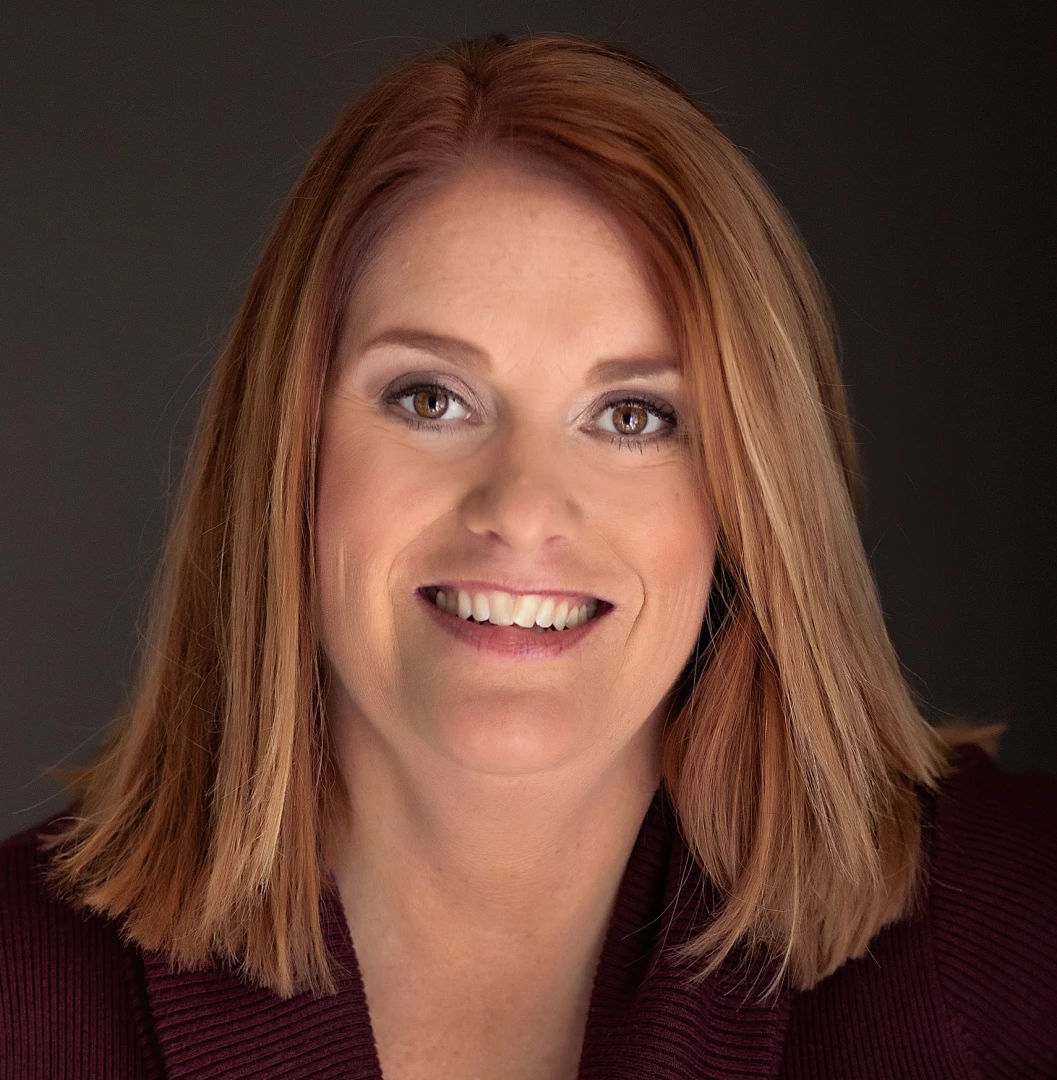Body-Positive Yoga: 8 Tips for Creating an Inclusive Class

Numerous studies have proven that physical activity has many health benefits, including improving cardiovascular health, decreasing the risk of chronic disease, and reducing the risk for depression. Yet, many barriers exist for larger-bodied people seeking out physical activity.
A stigma associated with larger people is that they are lazy, stupid, or lacking self-control. This is a sweeping generalization that doesn’t consider the many factors that can contribute to larger-sized bodies. But because of these misconceptions, those who need physical activity the most might not feel comfortable or welcome in a physical activity space. Fitness and sports marketing predominantly use images of thin, super-muscular people to promote an ideal shape. These images can be intimidating to an individual looking to become physically active.
A May 2017 study by Andrew C. Pickett and George B. Cunningham, titled “Creating Inclusive Physical Activity Spaces: The Case of Body-Positive Yoga,” published by Taylor & Francis Online, tackled the stigma of larger-bodied people participating in physical activity.
Although other studies have been done examining larger-bodied people’s attitudes toward physical activity, this study takes the approach of examining the instructor’s attitude and beliefs. The study used qualitative interviews with yoga instructors known for encouraging participation for students with larger bodies.
Pickett and Cunningham chose racially diverse instructors from Canada and the United States, ranging in age from 30 to 65 years old.
The researchers originally outlined six strategies for creating body weight-inclusive physical activity spaces:
1. Cultural Commitment
Simply including larger-bodied yoga instructors on the teaching schedule is effective in helping larger-bodied students feel at ease. Health and fitness magazines portray yoga as being practiced by young, thin, white women. Yet we know that men, older women, people of color, and those of all body shapes are yoga practitioners. Reinforcing the norm that anyone can practice yoga creates a feeling of inclusivity.
2. Authentic Leadership
An authentic leader expresses her true self, flaws and all, to create trust and respect with students. Acknowledging that certain poses are unattainable for whatever reason permits the students to respect their limitations as well.
3. Physical Space Considerations
The study found that renovations to physical space were only a minor factor in creating a body-positive environment. While some instructors removed large mirrors, most agreed that other factors were more important than cosmetic issues.
4. Language Matters
The language used in class can either stigmatize or empower an individual. Cueing a pose as either “beginner” or “advanced” sets up a hierarchy of yogi practitioners. However, whether due to body shape or an old injury, some poses are best done with modification or support no matter how long the yogi has been practicing.
5. Sense of Community
Building rapport between teacher and student, as well as among students, creates a feeling of belonging. Introducing members by name, encouraging communication and feedback, and allowing time to get to know each other on a deeper level beats the feelings of loneliness and instead creates a place of belonging.
6. Personal Autonomy
While it’s important for yoga students to feel in control of their practice, the instructors interviewed for the study didn’t feel it as important as other factors in creating a body-positive physical activity space.
During the course of the study, the researchers discovered two other strategies that body-positive yoga instructors felt vital to creating inclusive spaces:
7. Social Advocacy
Instructors who advocated for the inclusion of larger-bodied people were more likely to also advocate for other marginalized groups such as sexual or gender minorities. Leading by example to welcome minorities of any type allowed the community as a whole to accept and welcome fellow practitioners.
8. Focus on Health
Adopting a health-based model of physical activity, even going so far as to ban discussions of weight loss and dieting, led to a more positive feeling toward physical activity. Encouraging feeling healthy and comfortable with your body was found to lead to more long-term health and overall wellness in participants.
While Pickett and Cunningham acknowledge the study had some limitations by focusing on yoga instructors only, most of whom were female, the findings are still significant to a more body-positive environment.
The study’s findings suggest that inclusive spaces are built with an intentional effort by the instructor both to reduce the stigma associated with larger bodies, and to increase individual acceptance and group cohesion.
To read more about creating a body-positive yoga experience, read how yoga teacher Kate Heffernan practices acceptance – Yoga and the Art of Befriending Your Body: It’s an Inside Job.
 Jennifer Williams-Fields E-RYT 200 is passionate about writing, yoga, traveling, public speaking, and being a fabulous single momma to six super kids. Doing it all at one time, however, is her great struggle. She has taught yoga since 2005 and writing since picking up a crayon. Although her life is a sort of organized chaos, she loves every minute of the craziness and is grateful for all she’s learned along the way. Her first book “Creating A Joyful Life: The Lessons I Learned From Yoga and My Mom” is now available on Amazon. She has featured her essays on Yahoo! and Dr. Oz’s The Good Life. She is a regular writer for Elephant Journal Magazine, Your Tango, and YogaUOnline. See more from Jennifer at jenniferwilliamsfields.com
Jennifer Williams-Fields E-RYT 200 is passionate about writing, yoga, traveling, public speaking, and being a fabulous single momma to six super kids. Doing it all at one time, however, is her great struggle. She has taught yoga since 2005 and writing since picking up a crayon. Although her life is a sort of organized chaos, she loves every minute of the craziness and is grateful for all she’s learned along the way. Her first book “Creating A Joyful Life: The Lessons I Learned From Yoga and My Mom” is now available on Amazon. She has featured her essays on Yahoo! and Dr. Oz’s The Good Life. She is a regular writer for Elephant Journal Magazine, Your Tango, and YogaUOnline. See more from Jennifer at jenniferwilliamsfields.com



